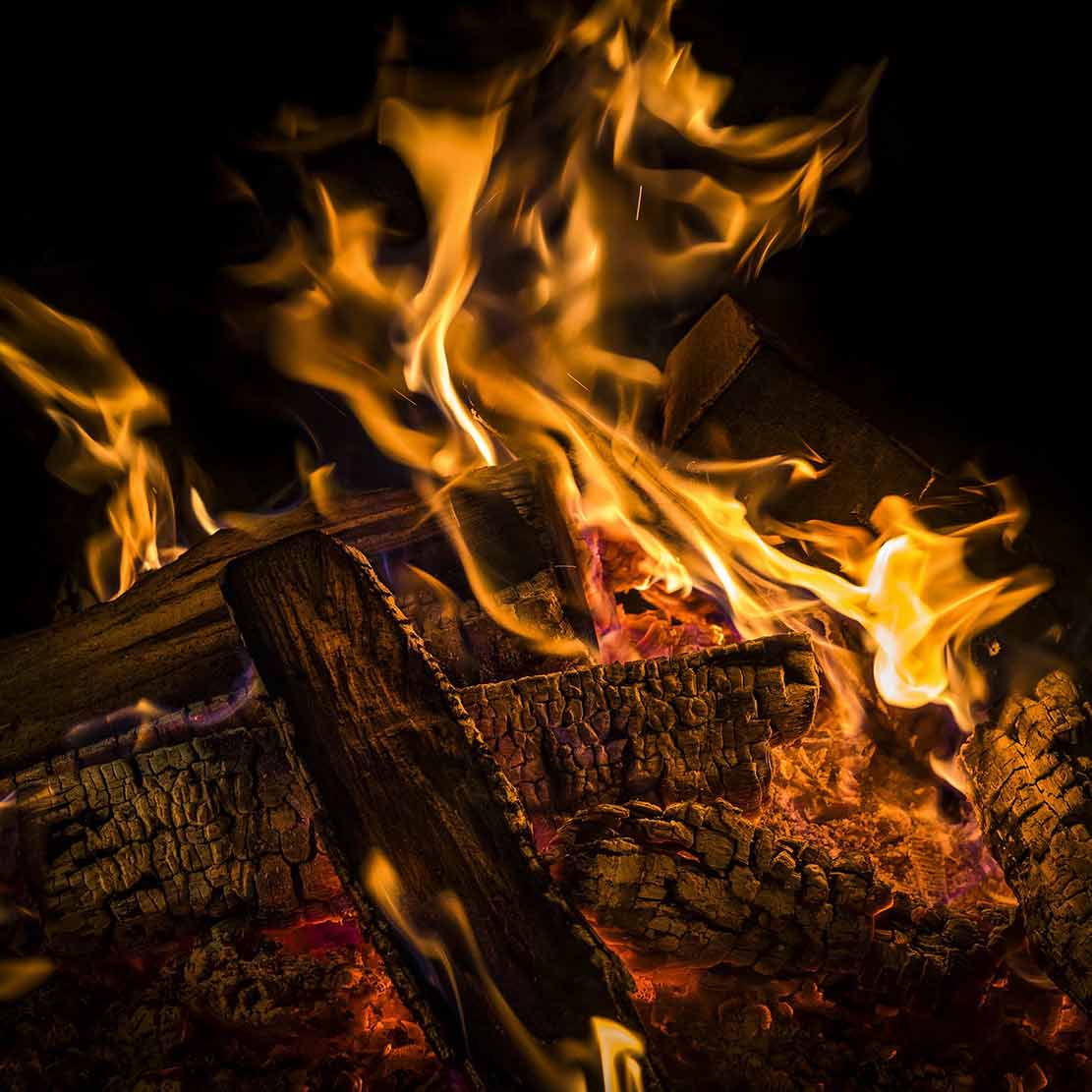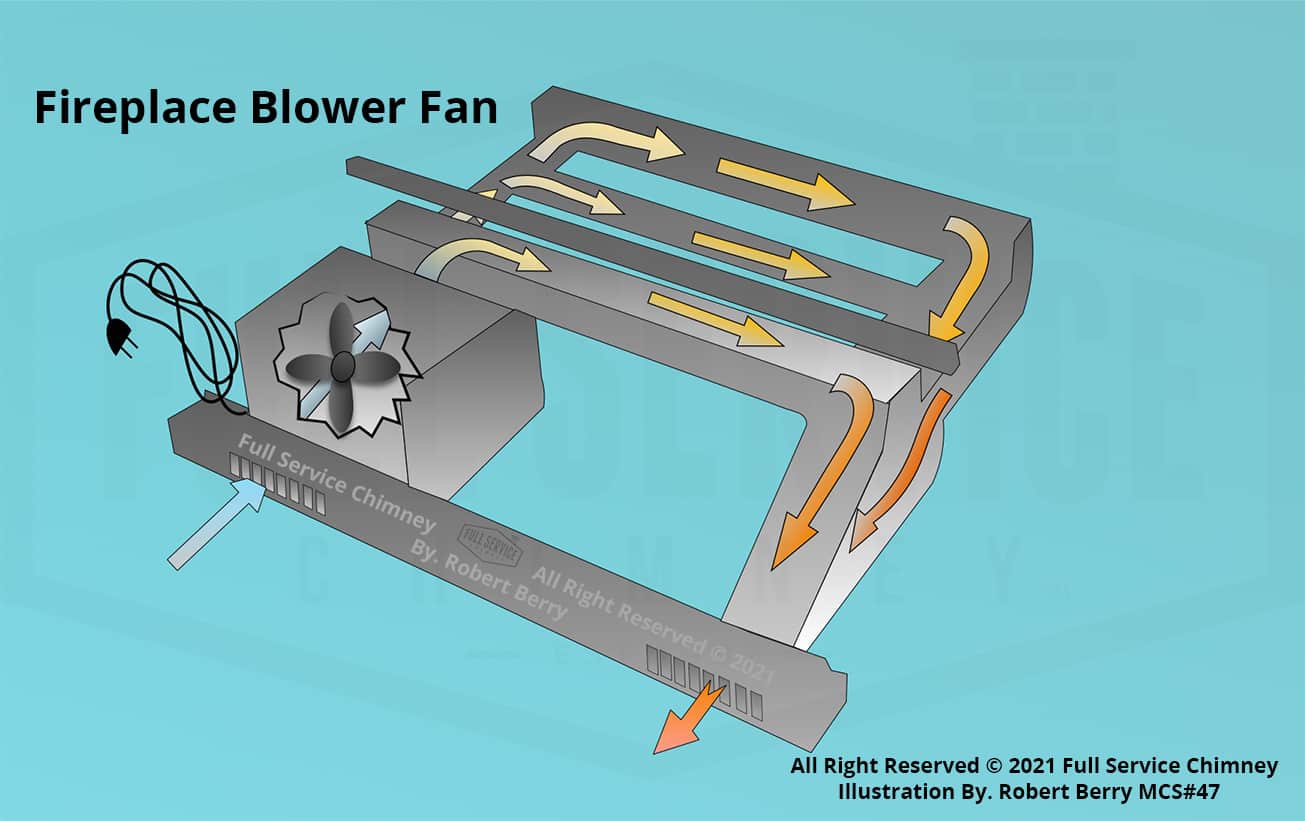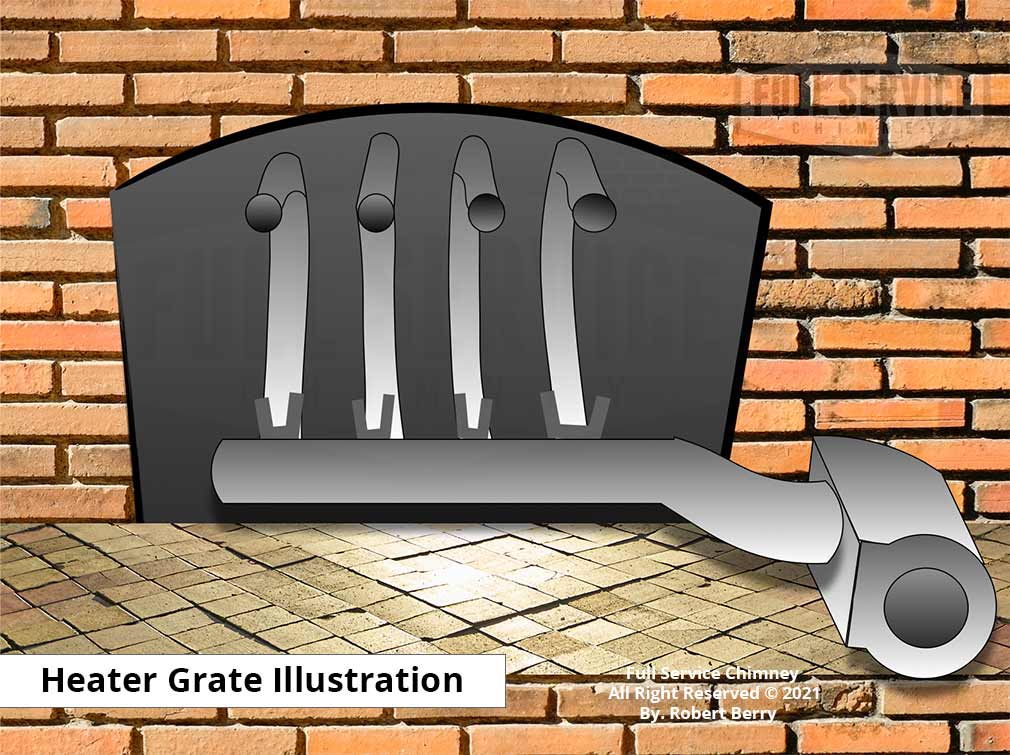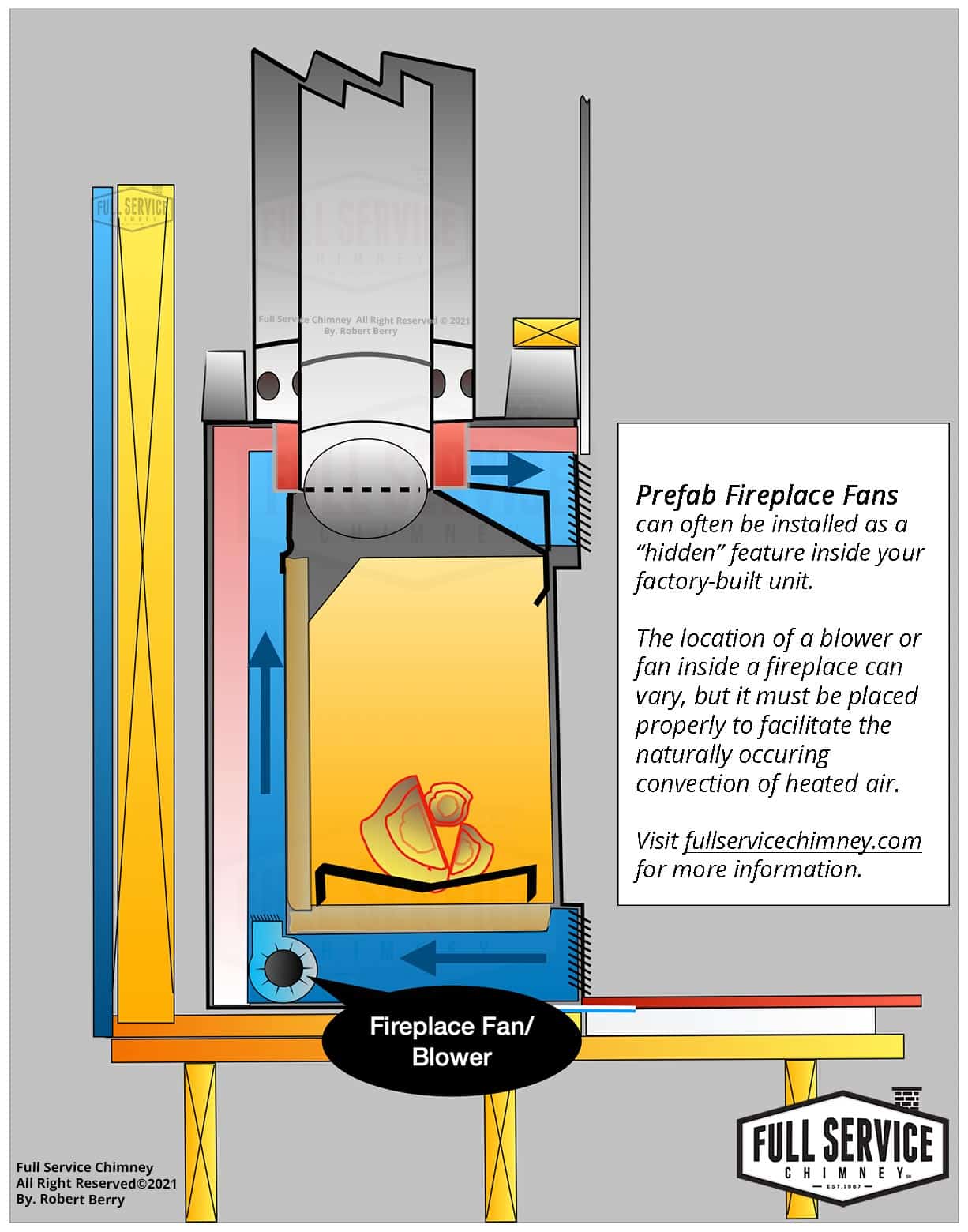If you want to harness more heat from your fire, then you need a Fireplace Blower Fan to assist with circulating extra heat into your room.
In this post, we will discuss some household problems and the solutions that fireplace fans provide. As well as dive into how to reclaim heat from your wood-burning stove.
Let’s explore your possibilities starting with some commonly asked questions about blower fans for insert fireplaces and more!
Why You Should Consider a Fan for Your Fireplace
Almost everyone enjoys the ambiance of a nice warm fire because of its contribution to making the home warm and cozy during those cold winter days.
The Problem is…
A frequent complaint of fireplaces is that:
“Sure, it makes the room look nice, but the rest of the home gets so cold.“
It’s a common problem with fireplaces and woodstoves that is very frustrating.

Why does the fireplace make the room cold?
Why Does the Fireplace Make the Room Cold?
While having a fire in the home should make things warmer, the opposite is often true—understanding how a fireplace and your home function together explains why cold drafts can happen. Fireplaces need airflow in the home to keep the large quantity of smoke being produced flowing up the chimney.
How much household air is needed?
Estimates are 250-500 CFM (cubic feet per minute) of air in the home MUST be consumed by the fireplace, or smoke will begin to spill into the room. So, if your fireplace is guzzling an average-sized room’s quantity of air every 5 minutes, why does this make the home colder? Because the house can not lose oxygen without it needing to be replaced.
Air leaves your home from household devices such as:
- exhaust fans
- open attic doors
- bathroom fans, etc.
After oxygen leaves your home the only resource for makeup air is from the outside. Since we all enjoy fires only during winter when it’s cold outside, it’s a given that the makeup air will be cool.
Bottom line, every fire sends heated home air up the flue, only to be replaced by cooler outdoor air; the cold-air comes in through the thousands of nooks and crannies found in the average home.
Suggested Reading
If you’re interested to learn more about this indoor air exchange and how it affects your fireplace then visit our post that explains the Stack Effect in great detail.
How to Get Heat from the Fireplace
Homeowners who happen to be hearth lovers want a beautiful crackling flame in their living room, but nobody wants to use a fireplace that makes their home uncomfortable, i.e., too hot or too cold.
The Solution is…
Adding a fireplace blower kit can make a difference. Many gas and wood-burning fireplaces are designed to circulate air around the firebox and combustion chamber. This air movement occurs naturally from a process called: convection. There is a delay in the fireplace getting hot enough to move heated air through your room during this process.
It’s enough to make a noticeable difference. In this case, a fireplace with a blower fan kit installed can be a real game-changer.
Do Fireplace Blowers REALLY Put Out Heat?
Yes, you bet they do!
You can add a blower fan to help push more heat into your room!
A fireplace becomes warmest directly around the firebox; any aid to move more room air around the hot passageway will push the heat through the room and into the rest of your home sooner than merely relying on convective heat transfer, as mentioned above.
On evenings when you may not have hours to wait for your fire to warm up to heat the whole room, you should turn the blower on sooner.
By activating your blower fan early in the process, you can look forward to radiant burning a fire in your fireplace.
Using a powered heater with a blower unit allows more hot air to warm the room before the heat gets lost up the chimney flue.
Can You Put a Fan on a Fireplace Insert?
Yes, it’s possible to add a fan to certain wood or gas insert models. A fireplace insert is a stove that we “inserted” into the fireplace and utilizes the chimney passageway as its means of exhaust. If the wood or gas fireplace fan insert is modern, chances are a blower can be added to get the warmth moving faster than normal. Many inserts are made for the addition of a blower or have one already installed when new.
Is Your System Wood or Gas?
Insert stoves of the wood or gas variety, are by nature better heat producers than open fireplaces, and offer features that make having a fire more enjoyable. With gas direct vents inserts, for example, in addition to having a gas fireplace fan, they often have conveniences like a remote control, thermostat controls, and the ability to adjust the height of the flame.
With wood-burning inserts, the catalytic combustor not only ensures cleaner exhaust than an open fireplace but making more heat for the home and less heat going up the fireplaces flue.
On their own, hearth stoves and gas inserts are substantial producers of heat for the home, but with the addition of a fireplace fan insert, that heat is felt sooner and travels throughout the home faster!

The illustrated example image shows the type of fan that is installed inside. The arrows show how air flows into the fireplace through a blower fan to help with heat output.
How Do Fans on a Fireplace Work?
When the firebox (or stove) warms up from the fire its surfaces become hot. At this point, the combustion chamber begins to radiate heat in the form of UV radiation. That means heat reaches the objects within the line of sight, warms those objects, and warms the room’s air. However, if forced air moves past the firebox with the use of a fan, then the air receives the heat and travels deeper into the area, sooner than relying on heat from radiation alone.
Most Blowers Require Manual Operation
Many blower fans are manually operated. That is, you would have to turn them on while the fireplace is burning and shut them off once you warmed up or the fire has gone out. More and more blowers on hearth appliances are thermostatically controlled. When the fireplace gets hot, a thermostat automatically sends electricity to the fan and continues to do so until the fire goes out or shut it off manually.
BUT… What if your fireplace or stove has no means to install a fan?
If your fireplace is one of the popular factory builds, prefabricated, zero clearance type, they often can have the optional fan/blower kits added during fireplace installation. Adding a blower to hand-built brick and mortar fireplaces is a little more challenging. But thanks to suppliers of fireplace accessories, there are more options.
Heater Grates
Tube heater grates are the most inadequate option for adding heat to your living room.
Certain models are somewhat flimsy, and the heater grates with tubes make chimney maintenance a pain. This is why we do not recommend these types of heaters for your fire.
Instead, the design of grate we prefer is the type that works, even with fireplace glass doors. Not only is a blower/fan almost 100% concealed, by adding doors, you minimize the air.

*We do not recommend tube-style heater grates
Fireplace blower fan installations can be a tough fit on masonry systems. It is possible with a wood or gas insert stove or fireplace to use a blower fan for more heat output. An insert takes the space currently occupied by the fireplace and makes it a heat-generating powerhouse!
In some cases giving the home 4 times the heat available when it was an open-masonry fireplace.
Unfamiliar with Inserts? We’ll teach you everything you need to know about these amazing home heating systems! Keep reading…
Can a fan be used to reclaim heat from your wood stove?
Since wood stoves were first popular, homeowners and inventors have tried to get more heat from the same amount of wood burned. Adding an auxiliary fan in your stove room adds excessive heat and has proven effective in forcing heat output around the room or from one room to another. However, the products that promise to “reclaim heat” that would otherwise go out your chimney’s flue are another matter altogether.
The Problem with Heat Reclaimers
Getting more heat from a wood-burning stove is great IF the heat comes from the stove body.
The biggest problem with heat reclaimers is that they use a blower to remove heat from the smoke AFTER it leaves the stove on its way to the chimney. The heat that is normally “lost up the chimney,” as these product manufacturers claim, is not lost in the chimney; rather, it is necessary for the function and safety of your system.
As some heat is exhausted into the connector and in-turn the wood-stove pipe, this heat is required to “power the chimney.” If your chimney is too cool, it will not draft well.
A strong draft is necessary to move the smoke and creosote out of the stove AND pull fresh, combustion air into the stove. If a chimney system is too cool, it will compromise how well the stove is able to operate.
But that’s not all…
A wood stove with cooler smoke encourages creosote build-up. Which is the byproduct of wood combustion in airtight wood stoves, and it can be minimized if two conditions are met:
- The stove is operated properly, burning good wood, and kept at an operating temperature range, so most creosote is burned while inside the stove.
- The connector and chimney flue is kept warm, as this prevents excessive creosote build-up from sticking to the system’s walls on its way to the chimney cap.
Since creosote is the unwanted fuel necessary for flue fires (and sometimes home fires) to burn, any adjustment to the system must be limited to improving stove to home heat transfer rather than reclaiming it from the exhaust. Removing heat from the exhaust can (and has) led to disastrous results and must be avoided.
In summary…
If you’re reading this post it’s likely because you want to get more heat from your fireplace into your hearth room.
What to do NOW to get more heat from your fire?
If your current system is not up to the task of heating your home, then we suggest getting it examined to ensure it’s operating at peak efficiency. In the event it is too small for the space you’re trying to heat, a recommendation could be replacing it with a new unit that will do a better job in your situation. With today’s modern wood stoves, clean-burning technology, and various fans and blowers available, your new woodstove replacement is a wise purchase indeed.
The first step to improving your fireplace, wood stove, or inserts heat output is evaluating your current system by a Certified Technician trained in the installation and troubleshooting of hearth appliances. Only by making sure your current equipment is safe and operating at peak performance can there be any hope of spending time and dollars to produce an improved result.



